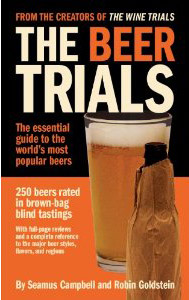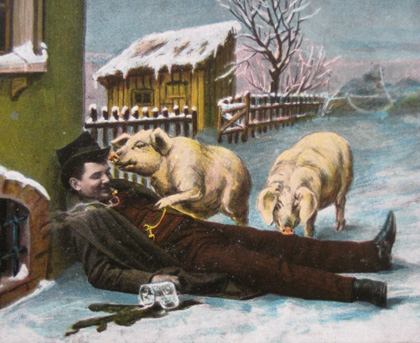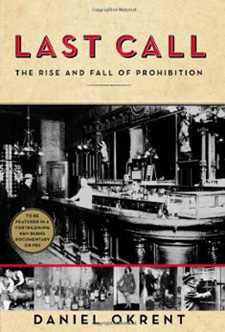Just last year in Great Britain, Procter & Gamble argued in court that Pringles are not potato chips (and hence not subject to tax rules) because they do not contain enough potato to have the “essence of potato.” The court rejected the argument.
In his new book “How Pleasure Works” author Paul Bloom uses this example of essence in exploring “The New Science of Why We Like What We Like” (the subtitle). Following only the single thread of essential and essentialism through a book full of other topics makes it clear the notion of pleasure is complicated and full of contradictions.
Many of the ideas in the book relate to the pleasure we take from drinking beer, some more directly than others. That certainly includes essence, given that American light lagers became the punch line for so many jokes that begin with the premise the beers no longer contain enough of traditional ingredients to be considered “real.”
Bloom writes that “things have an underlying reality or true nature that one cannot observe directly and it is this hidden nature that really matters.” He also wonders at length about the value we place on originals, compared to copies, and on objects that may contain the essence of others. That could be the work of artisans or it could be a piece of memorabilia, say an autograph. At times it would seem “soul” and “essence” could be used interchangeably.
Although Bloom includes a chapter devoted to food and drink, citing research involving both wine and beer, there’s much a reader must sort out or for him or herself. Pleasure, like flavor or aroma, is not an absolute. If clever advertising or great packaging or a sense the brewer has somehow touched your beer makes it taste better to you then all those things are OK. But you certainly benefit by understanding that before you open your wallet.
 Such would be the point of both “The Beer Trials” and “The Wine Trials 2010,” books I suggest reading in tandem. They are both from Fearless Critic Media, with Seamus Campbell and Robin Goldstein writing the former, Goldstein and Alexis Herschkowitsch the latter.
Such would be the point of both “The Beer Trials” and “The Wine Trials 2010,” books I suggest reading in tandem. They are both from Fearless Critic Media, with Seamus Campbell and Robin Goldstein writing the former, Goldstein and Alexis Herschkowitsch the latter.
One bit of disclosure. Goldstein passed through New Mexico earlier this month and we had a few beers together (no wine). I bought, he bought, so it’s not like a bribe passed between us. However I do enjoy his company and am inclined to speak well of him. We had a good time even when we had to yell to be heard over “open mic night,” talking about everything from land prices in Bordeaux to his theory that Ray Allen leads the NBA is “swishes.” (Goldstein is a Celtics fans and perhaps he shouldn’t have suggested this, since Allen was about to set a playoff oh-fer record on the TV flickering behind the bar.)
Goldstein is nothing but resolute when he talks about the value of tasting blind, whether it is by a group whose aggregate ratings will provide the recommendations in these book or an individual discovering the one-on-one sensual pleasures a particular beer provides. “The goal of is . . . (for tasters) to learn their own talents, to look past prestigious brand names as a signal,” he said. “They should not make the assumption that spending more will get you a better product.”
Although it may seem that we’ve talked the topics of blind tasting and what should you pay? to death in the beer blogosphere the front matter of each of the books is worth your time. “Beer Trials” also includes a rather extensive introduction to beer, making it as much of a book for beer beginners, and wine drinkers, as it is for those who already know what they think about Goose Island IPA or Ayinger Oktoberfest.
Both books are consumer guides, but a bit different. “The Wine Trials” lists 150 wines that sell for less than $15 and outscored $50-plus wines in blind tastings. “The Beer Trials” provides ratings (in theory from 1 to 10, but in fact from 3 to 9) for 250 beers. Much of the information in the book is available at The Beer Trials website. The result is the books seem to put beer on trial much less than wine, at least high priced wine.
“The wine world is more full of shit than the beer world,” Goldstein said. “There are more myths to be debunked.”
As wine blogger Joe Roberts details, Goldstein has not be shy on the debunking front. “I don’t want to create controversy for the sake of controversy,” he said. “My No. 1 goal is to be truthful.”
“The Wine Trials” merited a second edition, with recommendations based on all new rounds of tasting, and presumably “Beer Trials” will follow a similar path. Right now Fearless Critic is at work on iPhone and Smartphone apps, and Goldstein expects to report on blind tastings on an ongoing basis.
They may reveal far more than which wines or beers a group of panelist prefers. We came back to the topic several times during the evening, talking about the role of culture, about how as well as what people perceive, about when results were and were not statistically significant. Sometimes it seems like a waste of good beer when the conversation turns to the dreary sciences.
Here’s a short description of one of the experiments detailed in “The Beer Trials.” The key players are three pale lagers (Czechvar, Stella Artois and Heineken) and 138 beer drinkers in Portland, Oregon. The experiment was a triangle test, where participants are giving three samples, two of which are the same, then are asked if they can pick the one that is different. Portland tasters performed no better than chance in identifying the outlier.
However, in a similar experiment in Germany, Bavarian university students successfully differentiated between pale lagers of the region. Feel free to discuss among yourselves if this might have been because there is a distinct difference between the helles beers from Augustiner, Paulaner and Spaten or if the students’ palates are better trained.
Instead consider the experiments that could follow. What if you handed the drinkers at the Green Dragon pub in Portland three IPAs of the region? Would they be able to tell the difference then? What if you shipped those same beers to Germany? Would the massive quantities of Northwest hops simply cause the Bavarians’ heads to explode?
Those are relatively simple. Consider a tasting where drinkers sample a beer with a particular characteristic (flavor from German hops, hop bitterness, smoked malt, amount of cherry juice, the options are endless) and rate the intensity of that characteristic. Repeat once a month for six months, boosting the amount of ingredients each month. At the end of six months serve a beer made from original recipe. Will the panelist find it less intense than originally?
I could be dangerous with a tasting panel and a few generous brewers doing my bidding.
The results of group blind tastings and tasting blind by ourselves both help us understand our own palates. In their chapter titled “beer goggles” Campbell and Goldstein write, “Although extrinsic factors can enhance pleasure—there’s no reason to brown-bag your beer at dinner—we believe that extrinsic factors should be removed from the objective assessment and judgment of beer. Unless beer is judged blind, it’s impossible to tell which of its pleasure come from the physical properties of the drink, and which come from one’s associations with the brand.”
Goldstein knows it doesn’t end there. For instance, even tasting blind certain flavors signal that a beer should cost more.
And you don’t have to see a label to recognize a favorite beer. Our aroma memories are hard-wired and among the strongest we experience. Let’s say a friend manages a triangle tasting for you, starting with the premise only that the three beers will be a similar style. He serves them in opaque mugs, eliminating one clue about what they might be.
Yet you recognize one with the first whiff. Maybe it takes you to the hilltop beer garden at the Andechs Monastery, to the bar where you picked up your future wife, to wherever you were when you last had a beer with your dad. Part of the essence of this particular beer belongs only to you. You smile.
Is the magic in the memory? Is the magic in the glass? Pleasure is complicated.


